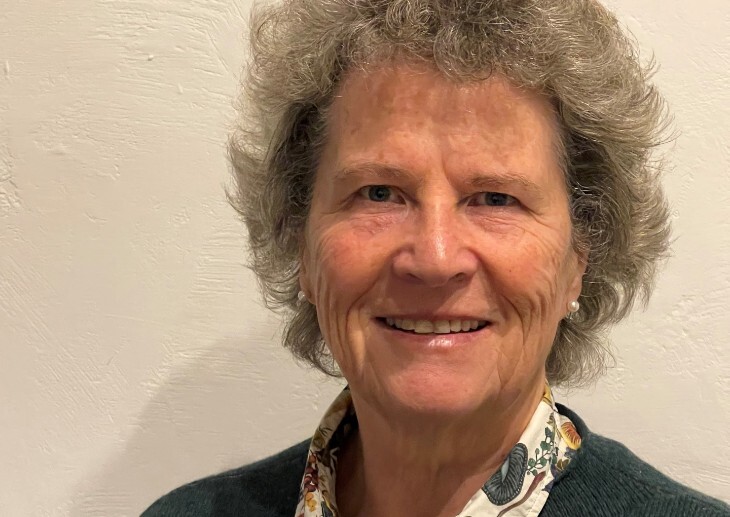The recently published 10 year plan stated an ambition for the UK to be a ‘world leader in public health’. It outlined the Government’s aim to shift from sickness to prevention, with the hope of ending the obesity ‘epidemic’, reducing health inequalities, strengthening the labour market and lowering NHS demand.
In the first in a series of articles on public health in the system, Healthcare Leader looks at how this plan might achieve these ambitions. Kathy Oxtoby reports
The public health landscape is changing.
‘Over recent years there have been changes in the health of the population due to changing population demographics, risk factors for ill health, and consequently an ageing population has led to a higher demand for healthcare services,’ says Sarah Smith, deputy director for improving population health, at NHS West Yorkshire ICB.
There is ‘a wealth of evidence showing that people are living longer, but not necessarily healthier, lives’, adds William Roberts, chief executive of the Royal Society for Public Health (RSPH).
‘Alongside this, we have seen growing recognition across society about the impact the world around us has on our health,’ he adds.
While there have also been big advancements in technology, such as weight loss medication and better screening tools, these are not ‘silver bullets’, says Mr Roberts. But, they could be part of a whole system approach to prevention alongside more traditional tools, he adds.
The Government’s recently published 10 year plan has stated the ambition for the UK to become a ‘world leader in public health’, but how will it achieve that and what does public health care look like right now?
Public health now
The response in public health to the rise in non-communicable diseases in recent decades has been to focus on the ‘big issues’ such as tobacco, healthy weight and alcohol, says Alice Wiseman, vice-president of the Association of Directors of Public Health (ADPH), the representative body for the professional views of directors of public health (DsPH) in the UK.
But, she says it is recognised that ‘to do that we need to engage with communities and understand the reality for them’.
Health improvement has ‘stalled’ over recent years, adds Ms Wiseman, who is also the local director of public health for both Newcastle and Gateshead.
‘If you look at healthy life expectancy, but also life expectancy there is a growing inequality between the most and least deprived, and this concerns us.’ This growing inequality is due to ‘the wider determinants of health’, she says.
Studies have suggested that 80% of health outcomes are determined by non-health related issues, such as education, employment, income, housing and access to green space.
A number of councils are looking to address this, focusing on the evidence of public health expert Professor Sir Michael Marmot’s eight principles regarding reducing health inequalities. The principles include: to ‘give every child the best start in life’, and to ‘ensure a healthy standard of living for all’.
Marmot eight principles
1. Give every child the best start in life.
2. Enable all children, young people and adults to maximise their capabilities and have control over
their lives.
3. Create fair employment and good work for all.
4. Ensure a healthy standard of living for all.
5. Create and develop healthy and sustainable places and communities.
6. Strengthen the role and impact of ill health prevention.
7. Tackle racism, discrimination and their outcomes.
8. Pursue environmental sustainability and health equity together.
Directors of public health are also ‘working hard on the commercial determinants of health’, she says. Lessons could be learned from the approach to stopping smoking, where marketing and advertising was restricted, and a similar approach taken to alcohol, unhealthy food and gambling, for example, she says.
David Buck, senior fellow in public health and health inequalities at The King’s Fund adds that there are ‘major challenges to our population’s health, which the delivery of healthcare services alone is not going to correct or reverse’.
‘We’re not going to treat ourselves out of this,’ he says.
These challenges ‘are being felt across the life course’, and include obesity in children, and an older population with many more multiple long term conditions than previously, he says. ‘And people are getting these conditions younger than they used to.’
The Health in 2040 report by researchers from The Health Foundation’s REAL Centre, which outlines projected patterns of illness in England, shows that 9 million people in England are projected to be living with illness in 2040 – 2.5 million more than in 2019. Much of the projected growth in illness relates to conditions such as anxiety and depression, chronic pain and diabetes, which are predominantly managed in primary care and the community.
‘This reinforces the need for focus on prevention and early intervention,’ says Phoebe Dunn, senior policy fellow at The Health Foundation.
In terms of investment in public health, the public health grant provided to local government has been cut by 26% on a real-terms per person basis since 2015/16, analysis by The Health Foundation has found. Real-terms per person cuts to the grant have tended to be greater in more deprived areas.
10 year plan
The Government’s recently published 10 year Health Plan for England hopes to have an impact on public health, with its three ‘radical shifts’ from hospital to community, analogue to digital, and sickness to prevention.
Neighbourhood health services
As part of the Government’s aim to shift care out of hospitals and into the community, neighbourhood health services are to be rolled out across the country, ‘bringing diagnostics, mental health, post-op, rehab and nursing to people’s doorsteps’.
A neighbourhood health centre (NHC) will be established in every community, ‘beginning with places where healthy life expectancy is lowest – a “one stop shop” for patient care and the place from which multidisciplinary teams operate’. NHCs will be open at least 12 hours a day and 6 days a week.
The focus on community in neighbourhood health ‘is encouraging from a public health perspective’, says Ms Smith.
‘This will need to align closely with services in the community that also support the determinants of health – there are some opportunities to link to housing, employment and education that we shouldn’t miss if we are to have the biggest gains in reducing the gaps we see in poor health and life expectancy. I welcome the focus on starting with places where life expectancy is the lowest as a signal to reducing health inequalities,’ she says.
‘The development of neighbourhood health services could be game-changing but we need to empower and resource the workforce and voluntary sector that deliver in communities to make it happen,’ says Mr Roberts.
There is also a ‘huge opportunity’ to broaden the definition of ‘neighbourhood health’ beyond traditional treatment settings, recognising workplaces and other everyday environments as key spaces for health promotion, he adds.
‘If we harness the full power of public services from schools to JobCentres, we can identify and address health problems before they start to cause harm,’ he says.
Ms Wiseman says bringing services closer to homes and communities ‘can only be a good thing’.
‘The challenge will be ensuring each local offer reflects the needs of that particular community rather than thinking one size fits all. There is learning from the Deep End GP practice approach which has aimed at meeting the complexity of need that often presents in our most disadvantaged communities,’ she says. These Deep End GP practices provide healthcare services to 15-20% of the most deprived UK populations, as identified by the index of multiple deprivation rank.
But while these may be ‘welcome aspirations’, much of it is ‘familiar’, adds Ms Dunn.
‘Similar ambitions to integrate health and care have appeared in a long line of NHS plans over decades, and making the shift happen this time will be no easier. Future funding will be below historic growth, the plan’s commitment to increasing the share of funding going to primary and community services is weak, and the political priority placed on waiting lists will likely keep hospitals in the spotlight,’ she says.
‘Neighbourhood health centres are not a new idea, with some parts of the country already using them as a model to treat patients. However, the challenge will be delivering the vision in the right way, as true neighbourhood care is not just about locating services under one roof but also improving the population’s health through providing hyper-local care that is co-designed with the community,’ says Mr Buck.
A concern with “neighbourhood” in the 10 year plan, is that it is ‘a very NHS idea of neighbourhood, and just about shifting care into communities, which has its benefits, but could end up just being acute services in community settings’, he says.
From sickness to prevention
The shift from sickness to prevention also promises much from a public health perspective.
Commitments include delivering on the Tobacco and Vapes Bill – which will mean that children turning 16 this year (or younger) can never legally be sold tobacco – restricting junk food advertising targeted at children, introducing new standards for alcohol labelling, and expanding mental health support teams in schools and colleges. The overall goal is to ‘halve the gap in healthy life expectancy between the richest and poorest regions, while increasing it for everyone, and to raise the healthiest generation of children ever’.
‘This shift is arguably the most important of all the missions,’ says Ms Wiseman. ‘There is so much evidence which shows the significant return on investment for a wide range of prevention programmes. We do appreciate this isn’t easy as it requires a shift in culture, but we can’t afford to continue to focus on treating ill-health after the event. Prevention really is better than cure – for individuals, for communities, for the NHS, and for the economy.’
‘A real shift to locally-rooted preventative health is possible and welcome, but the Government now needs to set out in detail how their plan will lead to increased investment in prevention,’ says Mr Roberts.
‘From minimum unit pricing and improving vaccine uptake to stronger occupational health programmes, we already have proven interventions that can improve outcomes if they are implemented effectively. The shift would also mean changing the culture of our health service to focus on and incentivise prevention.’
Ms Smith says the focus on primary prevention in the plan ‘is encouraging as is the focus on children and young people, if we are to halve the gap in healthy life expectancy’.
‘From an ICB perspective we also need to maintain a focus on secondary and tertiary prevention. Supporting proactive treatment of people living with long term conditions to live as healthily as they can – ensuring this is done in a targeted way that also aims to reduce inequalities,’ she says.
‘There is lots to welcome in the plan, such as a renewed focus on secondary prevention, mandatory targets for healthier food, and support for people with health problems to stay in work,’ says Mr Buck. ‘However, it lacks a commitment to significantly increase preventive spending, invest in the public health workforce, or address harmful alcohol consumption. While the goal of reducing the healthy life expectancy gap between rich and poor regions is reiterated, the plan does not clearly outline how it will achieve this or what additional actions the Government will take.’
On the shift to prevention, ‘the “health plan” is mainly an NHS plan’, says Ms Dunn. ‘The document rightly talks about social and economic conditions shaping health, and includes some tougher measures on obesity. But most of the document’s 150 pages cover the NHS.
‘Social care is left for Louise Casey’s review and stronger action on other major health risks, such as alcohol, is lacking,’ she says. ‘More work is needed to create the broader, cross-government approach to improve health that the Government’s health mission promised.’
‘Critical moment’
‘Public health is at a really critical moment,’ says Mr Roberts. ‘We are facing multiple health challenges that need the deep expertise of public health professionals, yet we are fairly small in number in compared to the health service. To truly bring the core principles of preventing disease, prolonging life and promoting health to wider settings – we need to think beyond healthcare.’
As the 10 year plan is published, ‘it is essential that the public health functions are not only maintained but strengthened in line with the evidence on a whole range of issues from promoting vaccine uptake to providing smoking cessation support’, he says. ‘This isn’t something that sits entirely within the NHS, so we need to see genuine collaboration with new strategic authorities to ensure that no services fall down the cracks. This is particularly important in relation to formal public health services and adult social care, where there is immense potential for local government to shape health outcomes.’
Public health ‘isn’t just about people with public health in their job title’, says Mr Roberts.
‘Everyone from pest control and cleaners to HR managers has a role to play in improving health outcomes, and a transformational public health system would not just recognise this but celebrate it. Making it easier for people outside the system to access the training and upskilling needed to have more of an impact on public health should be the next step.’
The ‘crucial role’ of the wider determinants of health also need to be recognised, adds Ms Wiseman. ‘If we’re really going to tackle health improvement, and inequalities that’s where we need to make sure there is sufficient focus and understanding from all government departments, not just DHSC.
‘It’s about keeping focus on evidence based, data led value for money pieces of work, and we’re going to have to get into the space of having difficult conversations about what we stop doing – because we can’t do it all.’
The future of public health will ‘depend on the decisions government makes, the signals it sends, the story it’s got behind its reforms, and whether it puts the money in the right places’, says Mr Buck. ‘It needs to invest in public health capability and capacity in order to underpin some of the things it argues it wants to see.’




